Toddler
(18 Months – 36 Months Old)
Toddler Learning objectives
Focus on developing independence, social skills, confidence, and a solid academic base in preparation for future learning.
Some goals include
Nomenclature
common objects, body parts, colors, animals etc.
Counting
by rote and recognition of numerals.
Expressing
thoughts and feelings in sentences.
Engage
in physical activities.
Pincer grip
Using the pincer grip for writing and drawing.
Interacting
Interacting well with others and shows self-confidence.
Differentiating
between sights, smells, tastes, and sounds.
Skills
Showing curiosity and problem-solving skills.
Practical Life
These activities help children learn how to take care of themselves, others, and the environment while developing independence, social skills, grace and courtesy, concentration, coordination, and physical order.
Practical Life skills include:
Spooning
Transferring is a staple activity in the Montessori classroom. Children can:
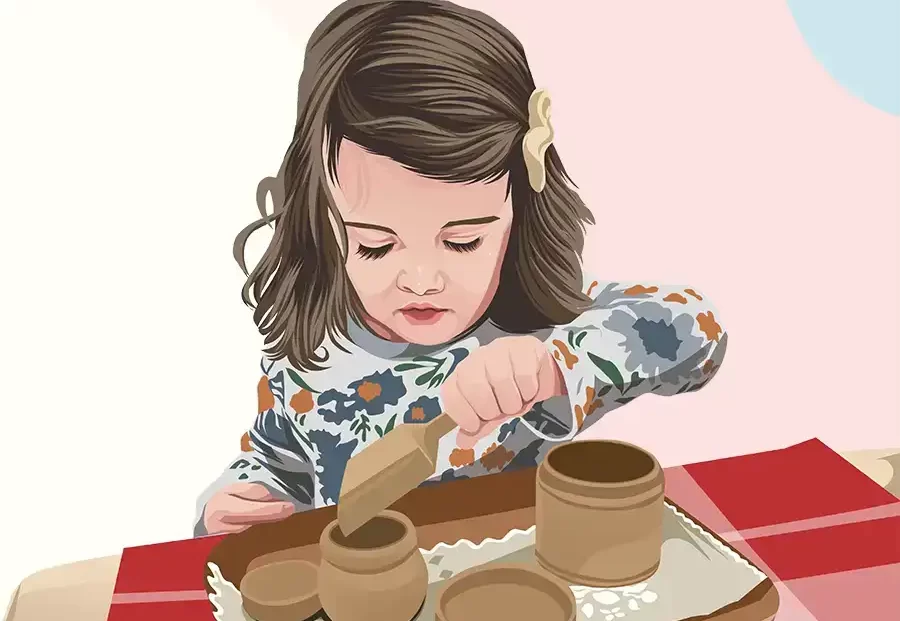
Pouring
Pouring is a fundamental exercise to help young children develop eye-hand control.
Dressing Frames
Dressing frames, made of two pieces of fabric that are fastened together using one of several everyday fastening devices, such as buttoning, zippering, lacing, tying, pinning, buckling, and hooking are core to Practical Life. Use of these frames:
Taking Care of Plants
Children learn how to care for classroom plants including when and how to water a plant, repot a plant and polish the leaves of a plant. This is a subset of children learning to care for their indoor and outdoor environment.
Cleaning after themselves
Children learn to actively participate in tasks necessary to maintain a tidy classroom.
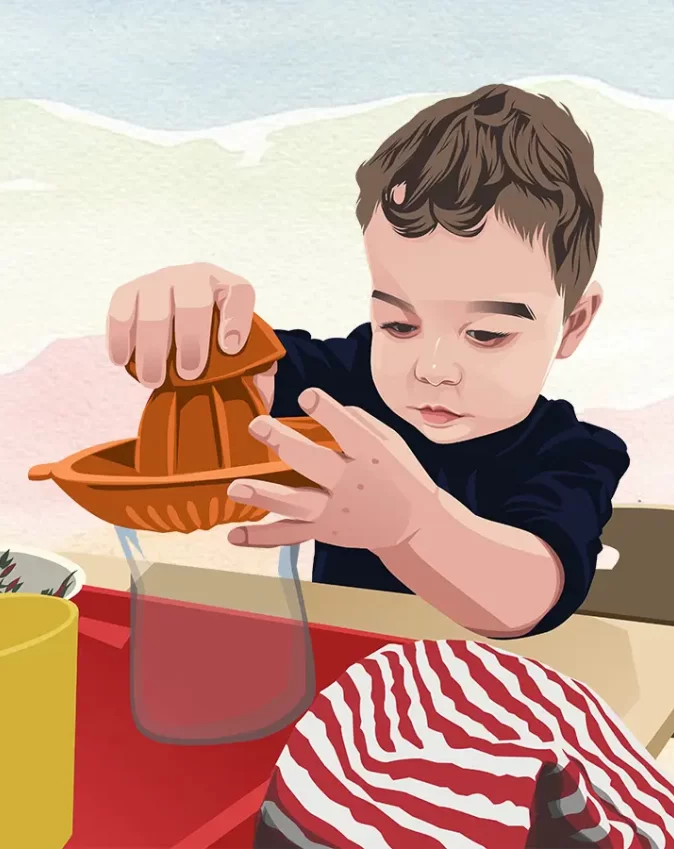
Grating
Food Preparation
Montessori students learn real life skills that enable them to feel comfortable preparing food or drink.
Sensorial
Children can develop and sharpen their senses of sight, touch, taste, smell, and sound through sensorial activities. These activities help them to classify, sort, and differentiate objects based on their sensory impressions. These skills are essential for learning language and math.
Sensorial materials include:
Sound Cylinders
This material develops the sense of hearing, exposing the child to different auditory experiences and, thereby, developing listening skills.
Sorting Trays
Sorting is a fundamental activity in the Montessori environment that involves arranging objects according to a certain criteria, such as color, size, or shape.
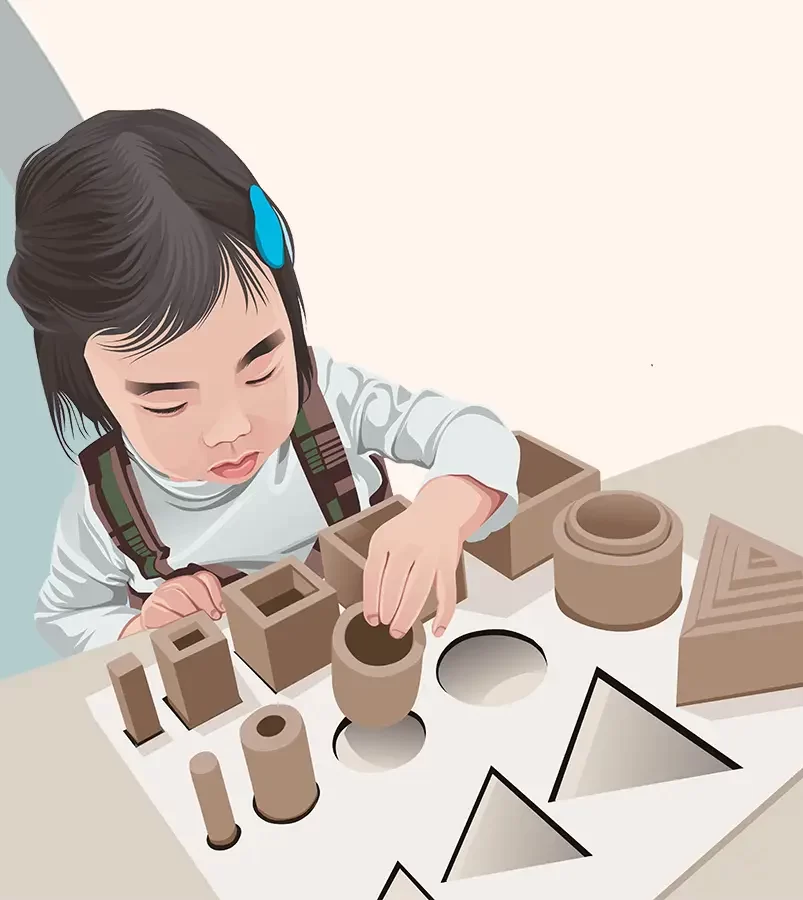
Pink Tower
The Pink Tower is usually introduced as the second activity in Sensorial work.
Brown Stairs
The Brown (or Broad) Stair activity is usually the third lesson within the Sensorial area.
Red Rods
The Red Rods are usually the fourth set of materials to be presented as a Sensorial lesson.
Geometric Tray
The Geometric Cabinet contains six drawers containing squares of wood with insets cut into the most common plane geometric figures.
Mathematics
Children can explore abstract mathematical ideas through concrete materials in Montessori mathematics. The materials help students to recognize and measure numbers, order and count them, perform arithmetic operations, find patterns, and understand different number systems.
Mathematical materials include:
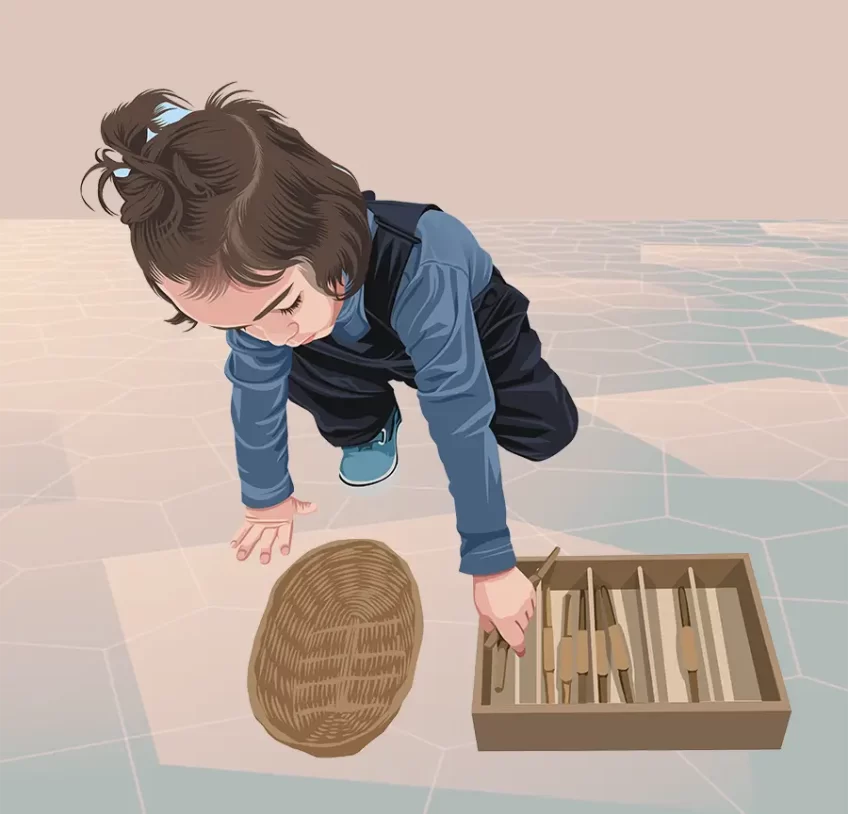
Spindle Box
A long wooden box is sectioned into 10 slots. The child places the appropriate number of spindle rods into the numbered slot. The range is 0 to 9.
Cards and Counters
Language
Children can learn how to recognize letters, sounds, simple words, vowels and consonants, and the basics of writing and reading through Montessori toddler language materials.
Language materials include:
Sandpaper Letters
The Sandpaper Letters are a series of alphabet letters in either cursive or manuscript form, which have a rough feel to them as to stimulate the child’s sense of touch and to assist in the development of sound recognition and writing. The child is shown how to trace the letter using their fingers. Once the letter has been traced, the sound of the letter is said.
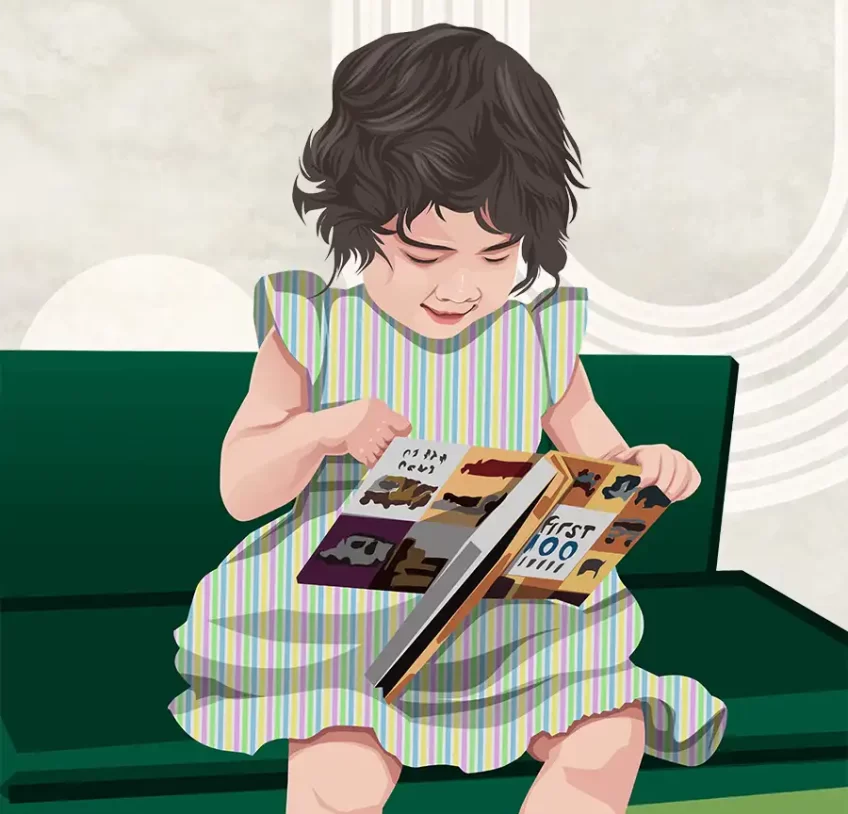
Paper Cutting Strips
This material allows children to enhance their fine motor skills in preparation for writing.
Object-Picture Matching
Visual Discrimination is necessary part of the ability to see and recognize letter shapes and word patterns.
Science
Children are introduced to science learning in an age-appropriate way, learning about the world around them and all aspects of life. This learning enhances understanding in other areas as well as fostering an interest in their environment.
Science materials include:
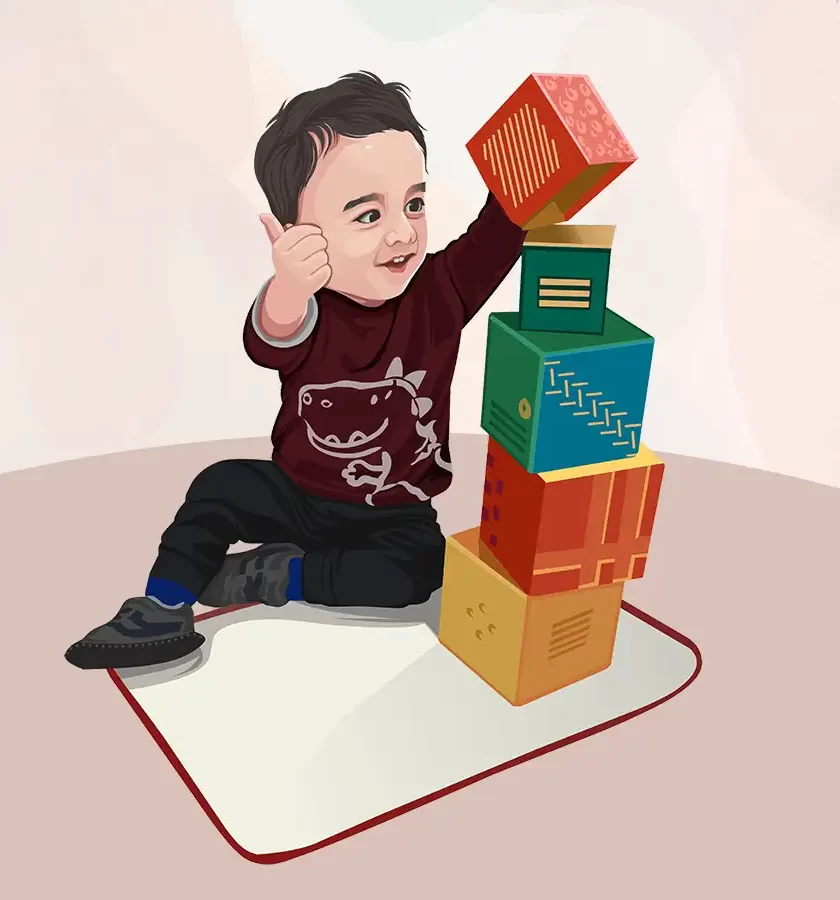
Botany Cabinet
Children use the botany cabinet to learn that there are different leaf shapes, learn the names of those shapes, and ultimately read the names using a series of matching cards.
Life Cycle Puzzles
The child observes and discusses life cycles of plants and animals in school garden, noticing how living things grow, reproduce, die, and decay in a continues cycle of life.
Science
The Montessori Culture Curriculum introduces children to the arts, geography, national culture, music, and history. Through cultural activities children explore their community and the world. They learn about similarities, differences, and develop a sense of understanding, appreciation and respect for diversity and all living things.
Cultural materials include:
Flags and Countries
Activities and Events
Children at are exposed to the diverse world we live in with a series of cultural events held at Yellow Acorn throughout the year.
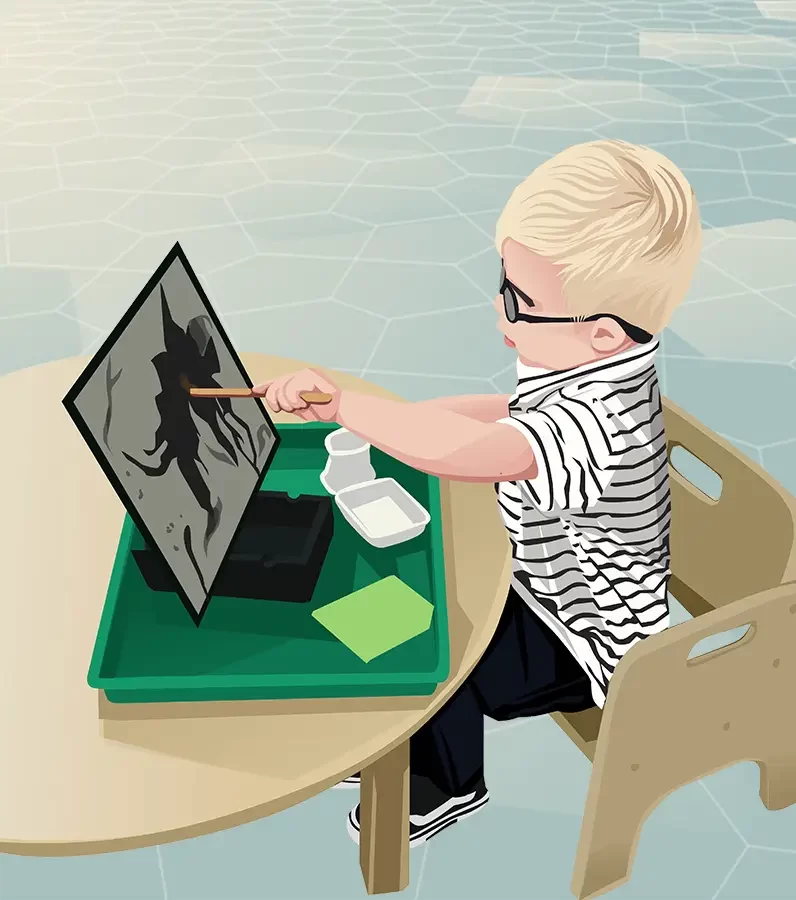
Apply Now!
We are currently accepting applications for the 2026-27 academic year.
Please review the admissions section of our site and download the application below
when you are ready to apply.

